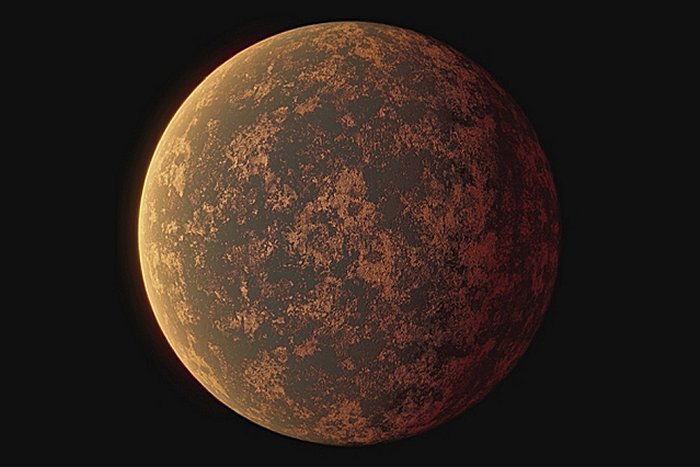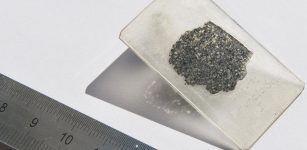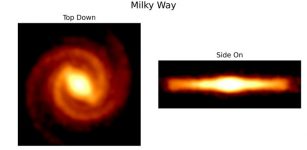LHS 3844b: Rocky, Earth-Sized Exoplanet Is Missing An Atmosphere
Eddie Gonzales Jr. – MessageToEagle.com – Astronomers have searched a rocky, Earth-sized exoplanet LHS 3844b for signs of an atmosphere but found none.
The planet LHS 3844b, was discovered in 2018 by NASA’s Transiting Exoplanet Survey Satellite, TESS, and was measured to be about 1.3 times larger than Earth. The planet zips around its star in just 11 hours, making it one of the fastest orbiting exoplanets known. The star itself is a small, cool M-dwarf that resides just 49 light-years from Earth.
 Artist’s rendering of the surface of LHS 3844b, a planet that has been found to have no atmosphere. Image: NASA/JPL-Caltech/R. Hurt (IPAC)
Artist’s rendering of the surface of LHS 3844b, a planet that has been found to have no atmosphere. Image: NASA/JPL-Caltech/R. Hurt (IPAC)
The planet likely has neither a thick, Venus-like atmosphere nor a thin, Earth-like atmosphere.
Instead, the planet is probably more similar to Mercury — a blistering, bare rock. If an atmosphere ever existed, the researchers say the star’s radiation likely blasted it away early in the planet’s formation.
“We basically found a hot planet with no gases around it,” co-author Daniel Koll, a postdoc in MIT’s Department of Earth, Atmospheric, and Planetary Sciences, said in a press release.
“This is the first time we’ve known anything in detail about the atmosphere of a planet around these M-dwarfs, which are the most common type of star, making LHS 3844b the most common type of rocky planet in the galaxy.”
Could any form of life manage to take hold in such a barren wasteland?
The researchers say it’s extremely unlikely, as the lack of an atmosphere would instantly cook off any organisms on the planet’s surface. But that doesn’t mean other terrestrial exoplanets are similarly without cover.
“We never thought this particular planet would be hospitable for life,” says lead author Laura Kreidberg, a researcher at the Harvard Center for Astrophysics.
“It’s more a question of whether this whole category of planets around smaller stars has atmospheres or not. And our technique is a robust way of assessing whether an atmosphere is present or not.”
LHS 3844b- extremely close to its star, and incredibly hot – is a tidally locked planet, meaning that it has a permanent day side and night side to its star, just as the moon always shows the same face to the Earth. If an atmosphere exists, it would circulate heat around the entire planet, and the heat emitted by both the day and night sides would be roughly the same.
In the absence of an atmosphere, the day side would be considerably hotter than the night side.
The researchers calculated that the dayside is a toasty 1,000 kelvins, or about 1,340 degrees Fahrenheit, whereas the nightside plummets to as low as 0 K, or -460 F. The drastic temperature difference indicates that the planet does not have a thick, Venus-like atmosphere that would distribute heat evenly around the entire planet.
Written by Eddie Gonzales Jr. – MessageToEagle.com Staff










